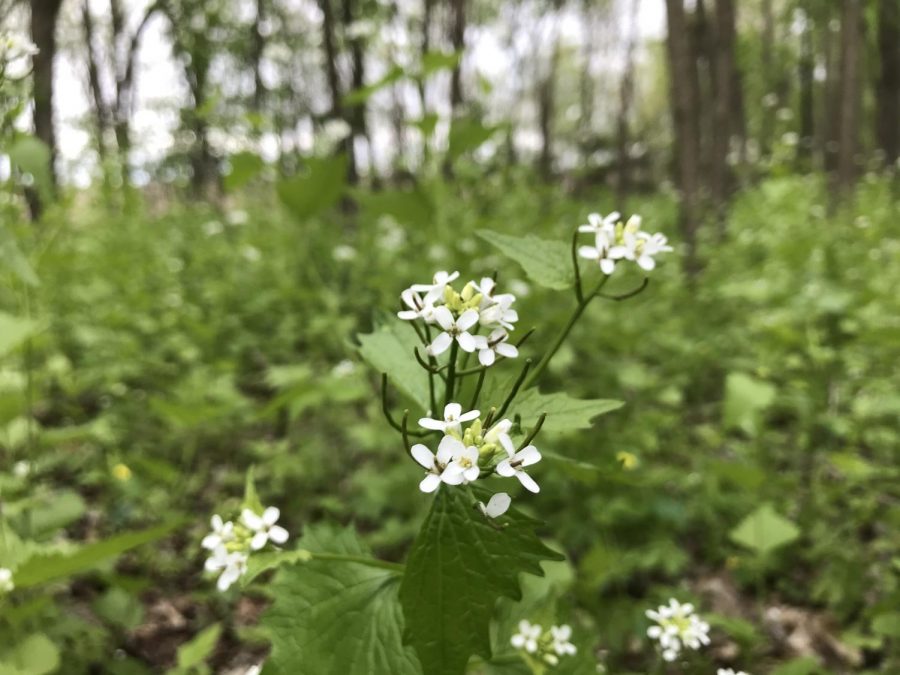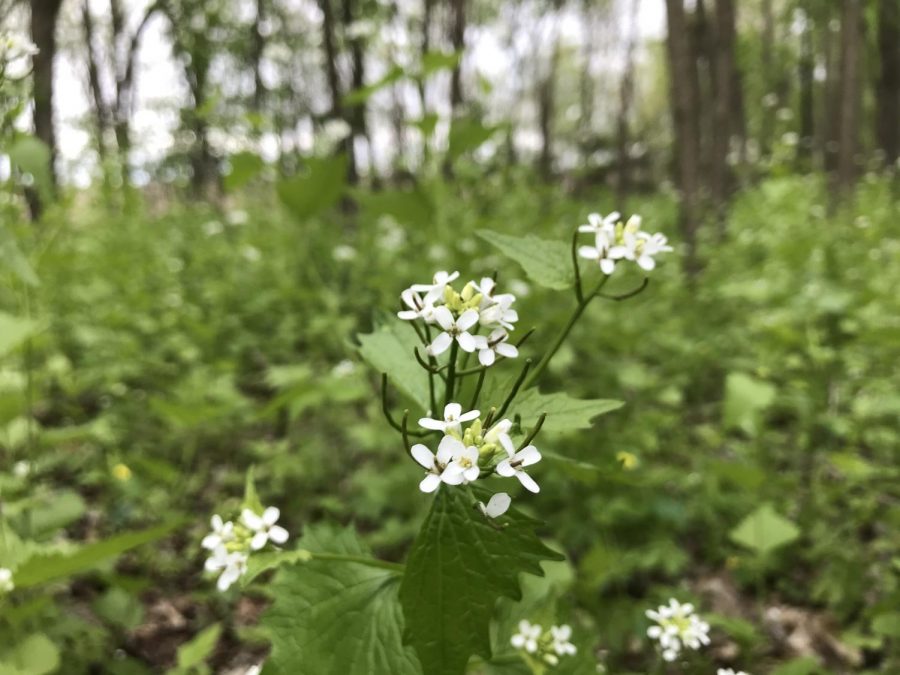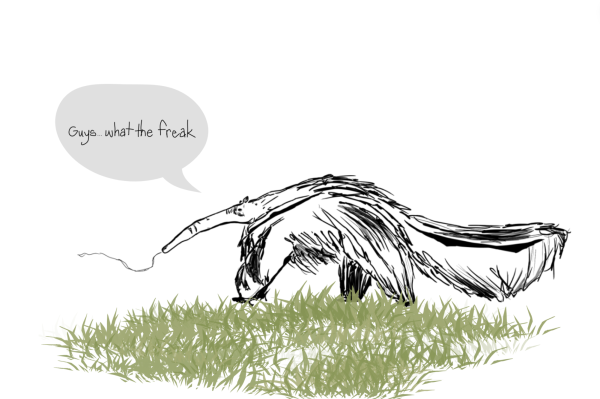Garlic Mustard Invasion in Iowan Forests
May 17, 2020
Whether you’re cleaning up your yard, hunting for morels, or just going for a hike in the woods there’s no doubt that you’ve seen garlic mustard infesting Iowa forests.
Garlic Mustard, originally introduced from Europe, was identified as a species in North America in 1999 and by 2000 was officially labeled a class A notorious weed causing serious concerns for North American forests.
In an interview with the Daily Iowan, Andrew Dahl,l a University of Iowa arborist, explains how the plants have abilities to invade.
“Garlic mustard is allopathic, which means that it exudes a chemical from the roots that can inhibit germination of other plants nearby,” Dahl said. “It’ll form these colonies of nothing but garlic mustard and push out the [flora], and it can even inhibit tree germination. It’ll just be a carpet.”
Garlic mustard is able to grow in various conditions including sun, shade, and water with each plant able to have up to 25,000. They also have no natural predators making them difficult to eradicate.
“It will basically take over an area,” he said. “It doesn’t have any natural checks or balances here. There [are] no species that eat it, there’s no disease, so there’s nothing to hold back the population in that respect.” Dahl said.
Garlic mustard has the ability to cross-pollinate or self-pollinate at high rates, and over time will compete out native vegetation and become extremely invasive. According to Washington King Country in an article titled “Garlic Mustard Identification and Control,” seeds can last in the soil for up to 10 years.
Garlic mustard is difficult to control once established, but with vigilance and care, we can work to eliminate it from Iowan forests.
Because the plant takes an average of two years to be fully grown, The Indiana Native Plant Society suggests picking one infestation in a specific area and monitoring it for up to 2-5 years. After that, if no more plants are identified, eradication will be complete.
One method to uproot garlic mustard is hand pulling. Hand pulling is an effective method for root removal and should be done in the springtime prior to the seed set. Pulling later in the season will only encourage the spread of seeds. It’s important to not step on or cut the plant as doing so will cause several more stems to form. After pulling, resist the urge to compost the plants and instead, bag and dispose of them a garbag
e can. Chemicals can also be effective in getting rid of garlic mustard. Chemicals should be used in the spring or fall on seedlings and rosettes. Be aware of laws and regulations on herbicide use in the area.
One good way to get involved in the community is to join surrounding organizations for “Garlic Mustard Pulls” in forests or preserves. Students and community members at the University of Iowa regularly do pulls in various places around campus as well as in locations such as Hickory Hill Park. You can make a difference!




















































